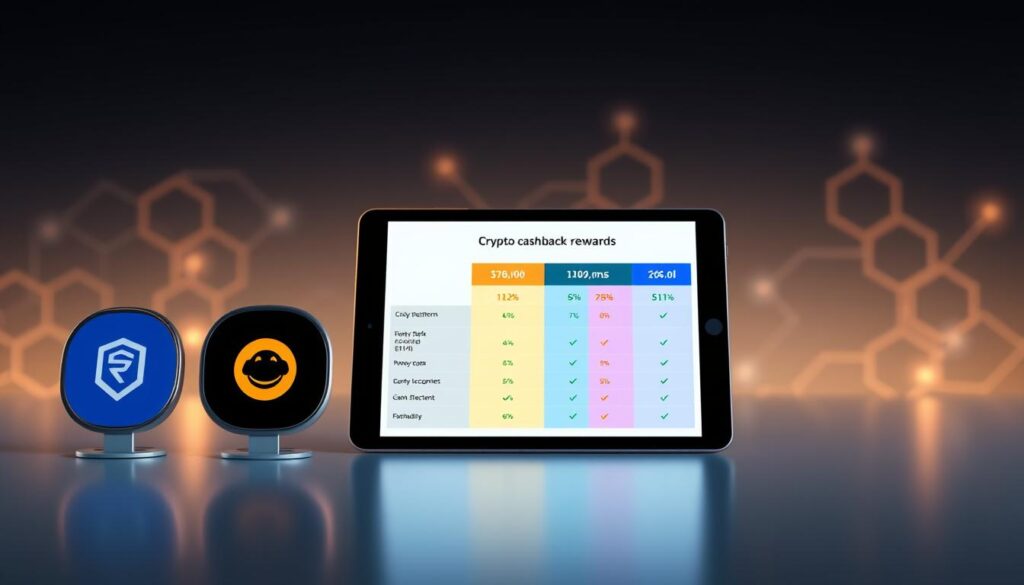Now Reading: Crypto Day Trading: How to Trade Cryptocurrency Successfully
- 01
Crypto Day Trading: How to Trade Cryptocurrency Successfully
Crypto Day Trading: How to Trade Cryptocurrency Successfully

Capitalizing on short-term price movements in digital asset markets demands precision and strategy. Unlike traditional stock exchanges with fixed hours, blockchain-based markets never sleep. This constant activity creates opportunities but also requires traders to balance speed with careful analysis.
Successful strategies rely on technical indicators, real-time news interpretation, and disciplined risk management. While some investors thrive in this fast-paced environment, others underestimate the emotional stamina needed to handle rapid gains and losses.
Modern platforms provide advanced charting tools and instant execution, yet profits aren’t guaranteed. Developing expertise takes months of practice and continuous learning. Many newcomers discover that consistent results require more than just watching price charts.
Key Takeaways
- Markets operate 24/7, requiring constant vigilance
- Technical analysis forms the backbone of effective strategies
- Emotional control separates successful traders from the rest
- Initial successes often mask long-term challenges
- Specialized tools and education improve decision-making
Introduction to the World of Crypto Day Trading
Digital currency markets present unique challenges for those seeking quick profits. Unlike conventional stock exchanges with set operating hours, blockchain platforms never close. This creates a dynamic environment where prices can shift dramatically within minutes.

Defining Crypto Day Trading
This strategy involves opening and closing positions in digital assets within a single 24-hour period. Participants aim to profit from micro-fluctuations rather than long-term growth. Success depends on interpreting price charts, monitoring global news, and executing timed trades.
How It Differs from Traditional Trading
Three key factors separate blockchain markets from conventional exchanges:
- Continuous operation enables round-the-clock opportunities
- Price swings often exceed 10% daily versus 1-3% in stocks
- No centralized authority halts trades during extreme volatility
Accessibility remains a double-edged sword. While anyone with internet access can participate, the lack of regulatory safeguards increases potential risks. Emotional discipline becomes crucial when managing rapid gains or losses.
Foundations of Successful Cryptocurrency Trading
Navigating digital markets requires mastering two core elements: interpreting rapid shifts and building structured approaches. Assets like Bitcoin often swing 5-10% within hours, turning minor decisions into major outcomes. Seasoned participants treat these fluctuations as puzzles to solve, not random events to gamble on.
Understanding Price Movements and Volatility
Market psychology and breaking news often dictate short-term shifts. A regulatory announcement or tech upgrade can erase gains faster than morning coffee cools. Three forces amplify these swings:
- Whale activity from large wallet holders
- Breaking global financial news
- Platform-specific technical developments

Charts become roadmaps when analyzed properly. Candlestick patterns and volume indicators help predict momentum shifts. For instance, a sudden spike in transactions might signal impending price action before it appears in headlines.
The Importance of a Clear Trading Strategy
Structure defeats chaos in fast-moving markets. Professionals outline specific entry/exit rules and loss limits before placing orders. Consider these non-negotiable components:
- Predefined profit targets
- Maximum acceptable loss per trade
- Time-based exit triggers
Emotional discipline separates sustainable success from lucky streaks. When assets swing wildly, a written plan prevents panic decisions. Regular strategy reviews adapt approaches to evolving market conditions.
Expert Strategies for Crypto Day Trading Success
Mastering rapid market shifts requires more than instinct—it demands structured frameworks. Professionals treat each decision like chess moves, anticipating outcomes three steps ahead. Preparation separates consistent performers from those chasing fleeting opportunities.

Setting Up Your Trading Plan
Blueprint your approach before entering volatile markets. Define precise entry triggers, such as specific candlestick patterns or volume spikes. Exit rules prove equally critical—determine whether you’ll close positions at fixed profit percentages or technical resistance levels.
Risk parameters form your safety net. Limit single-trade exposure to 1-2% of total capital. Combine this with stop-loss orders that auto-execute when prices move against predictions. Successful traders follow their predefined checklist religiously, even during adrenaline-fueled moments.
Identifying Optimal Time Frames for Trades
Chart intervals shape decision-making. The 15-minute window suits scalpers targeting 1-3% gains, while 4-hour charts help swing traders capture broader trends. Three factors guide interval selection:
- Asset volatility patterns
- Personal availability for monitoring
- Historical performance data
Test strategies across multiple cycles using historical data. Platforms offering backtesting tools let traders refine approaches without financial risk. Discover which 10 best crypto day trading strategies align with your risk tolerance and schedule.
Technical Analysis: Tools and Indicators for Traders
Chart patterns and mathematical indicators transform raw market data into actionable insights. Professionals use these tools to decode price behavior and predict potential shifts. Unlike guesswork, structured analysis helps identify repeating cycles and psychological patterns in asset values.
Candlestick Charts and Trend Analysis
Candlesticks reveal market sentiment through color-coded bars. Green bars show price gains, while red indicates declines. Wicks highlight volatility extremes, showing where buyers or sellers intervened. Common patterns like hammer formations or engulfing candles signal potential reversals before major moves.
Using RSI, Moving Averages, and MACD Effectively
Three indicators form a powerful toolkit:
- RSI (Relative Strength Index): Flags overbought (above 70) or oversold (below 30) conditions
- Moving Averages: Smoothes price noise – golden crosses (50-day above 200-day) suggest uptrends
- MACD: Histogram spikes indicate strengthening momentum when lines cross
Combining these tools reduces false signals. For example, RSI oversold readings gain credibility when paired with bullish MACD crossovers. Always test strategies in different market conditions to refine accuracy.
Risk Management and Protecting Your Capital
Protecting financial resources while navigating volatile markets separates sustainable traders from short-lived participants. Every decision carries potential consequences, making disciplined safeguards essential. Without proper controls, even skilled analysts can watch gains evaporate overnight.
Establishing Stop-Loss and Take-Profit Levels
Automated orders act as your financial safety net. Set stop-loss limits to exit positions if prices drop below predefined thresholds. This prevents emotional decisions during sudden downturns.
Take-profit targets lock in gains before markets reverse. Determine these levels using technical indicators like resistance zones or percentage-based goals. Three benefits emerge:
- Eliminates greed-driven hesitation
- Preserves capital during unexpected shifts
- Creates measurable performance benchmarks
Assessing and Managing Risk Tolerance
Your psychological armor matters as much as technical skills. Start by calculating maximum acceptable losses per trade—experts recommend 1-2% of total funds. This approach keeps accounts intact through multiple setbacks.
Consider these factors when sizing positions:
- Account balance and liquidity needs
- Asset volatility patterns
- Personal stress thresholds
Regularly review strategies to align with changing market conditions. Successful participants treat risk management as their non-negotiable foundation, not an optional extra. Emotional control transforms temporary setbacks into learning opportunities rather than account killers.
Leveraging Trading Tools and Platforms
Advanced tools separate prepared traders from those relying on guesswork. Modern markets demand real-time insights and rapid execution. The right combination of software and automation transforms raw data into strategic advantages.
Charting Software and Real-Time Data
Professional-grade charting systems decode market patterns through customizable indicators. These platforms track price movements across multiple time frames simultaneously. Features like volume heatmaps and order book visualizations reveal hidden opportunities.
Real-time data feeds ensure decisions align with current market conditions. Alerts for key support/resistance levels help traders act before trends reverse. Integrated drawing tools let users mark critical zones directly on candlestick charts.
Benefits of Automation and Trading Bots
Algorithmic systems execute strategies with machine-like precision. Bots monitor markets 24/7, capturing opportunities during off-hours. Three key advantages emerge:
- Eliminates emotional decision-making
- Backtests strategies using historical data
- Manages multiple positions across exchanges
Customizable parameters let traders set exact entry/exit rules. Portfolio trackers sync with exchange APIs, providing consolidated performance metrics. Risk calculators automatically adjust position sizes based on account balance and volatility levels.
Recognizing Market Trends and the Impact of News
Global events ripple through digital asset markets faster than traditional financial systems. Shifts in regulations or viral social media posts can alter prices before most investors finish their coffee. Staying ahead requires understanding how collective psychology interacts with breaking developments.
Decoding Social Signals and Market Reactions
Platforms like Twitter often act as early warning systems for price swings. A single tweet from industry leaders might spark double-digit percentage changes within minutes. Tools tracking trending hashtags help gauge emerging market trends before they dominate headlines.
Regulatory announcements and corporate adoption news create immediate impacts. Positive developments boost buying activity, while security breaches trigger sell-offs. Successful participants cross-reference multiple sources to separate hype from substance.
Sentiment analysis tools quantify emotional extremes in market discussions. These indicators work best when combined with volume spikes and technical patterns. Remember—crowd enthusiasm often peaks just before corrections.
Timing responses to breaking news separates reactive traders from strategic planners. Establish predefined rules for entering/exiting positions during volatility spikes. This discipline prevents impulsive decisions when assets swing wildly.
FAQ
What distinguishes crypto day trading from traditional trading?
Unlike traditional markets, crypto markets operate 24/7 with higher volatility. Platforms like Binance and Coinbase enable rapid execution, while factors like social media trends and regulatory updates often drive abrupt price shifts, requiring quicker decision-making.
How do traders identify optimal entry and exit points?
Tools like candlestick charts, RSI, and moving averages help analyze trends. For example, a moving average crossover on TradingView might signal momentum shifts, while overbought RSI levels could indicate potential reversals.
Why is risk tolerance critical in crypto trading?
Sudden price swings can amplify gains or losses. Setting stop-loss orders on Kraken or Bybit ensures predefined exit points, protecting capital during unexpected downturns. Diversifying assets like Bitcoin and Ethereum also mitigates exposure.
How does automation enhance trading efficiency?
Bots on platforms like 3Commas execute trades based on preset rules, reacting faster than manual efforts. They monitor multiple assets simultaneously, capitalize on arbitrage, and reduce emotional decision-making during volatile periods.
What role does news play in shaping market trends?
Events like regulatory announcements or tech upgrades (e.g., Ethereum’s Merge) trigger rapid movements. Tools like CoinMarketCap’s newsfeed or Twitter alerts help traders anticipate shifts, while sentiment analysis tools gauge crowd psychology.
Which chart patterns are most reliable for short-term trades?
Patterns like bull flags or head-and-shoulders often precede breakouts. Combining these with volume indicators on CoinGecko or CryptoWatch improves accuracy, especially when aligning with broader market trends.
How do fees impact profitability in frequent trades?
High-frequency strategies on exchanges with low fees, like FTX or KuCoin, minimize costs. Tiered fee structures reward higher volumes, while network charges for withdrawals vary between assets like Solana (low) and Ethereum (high).













